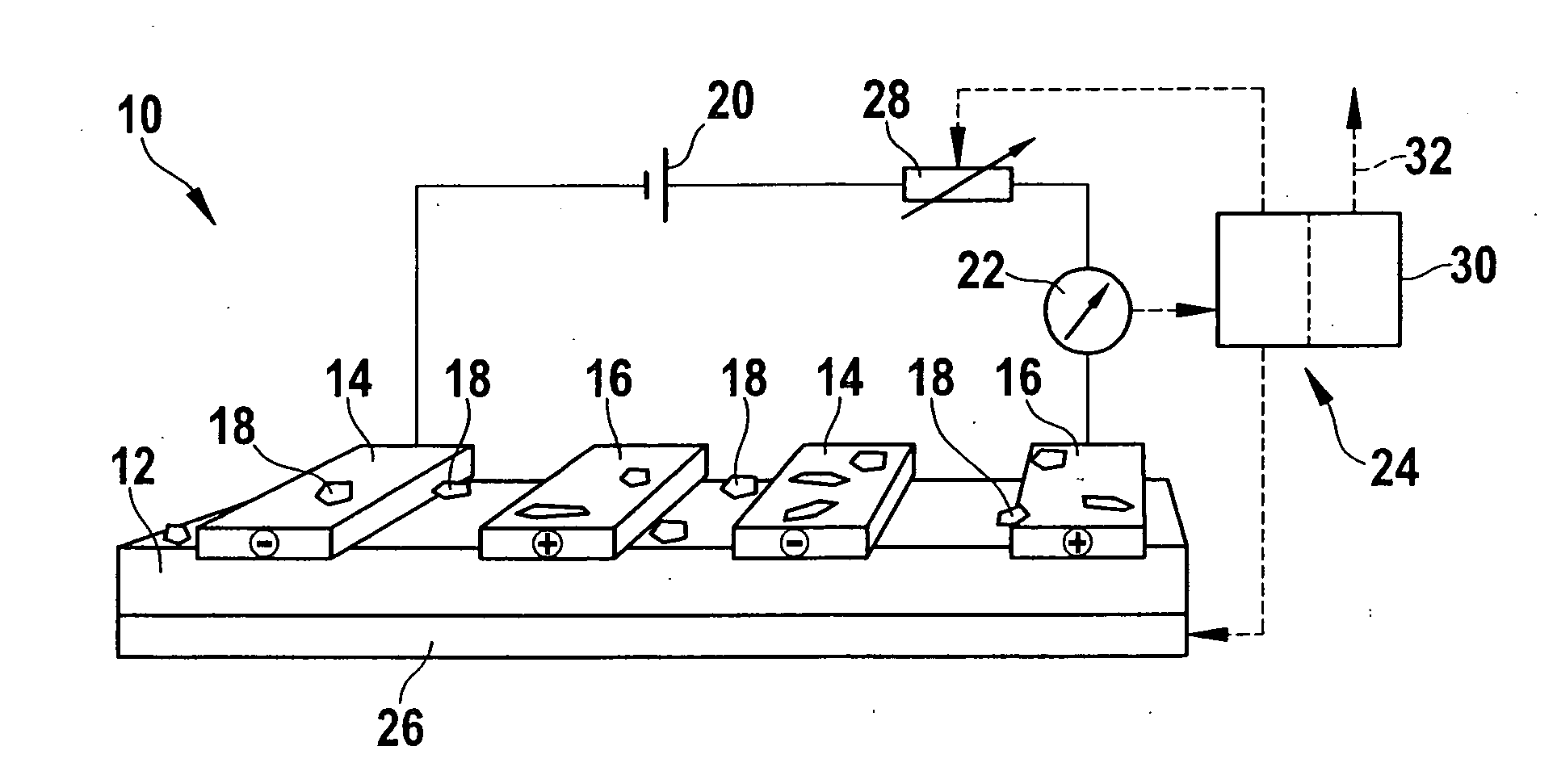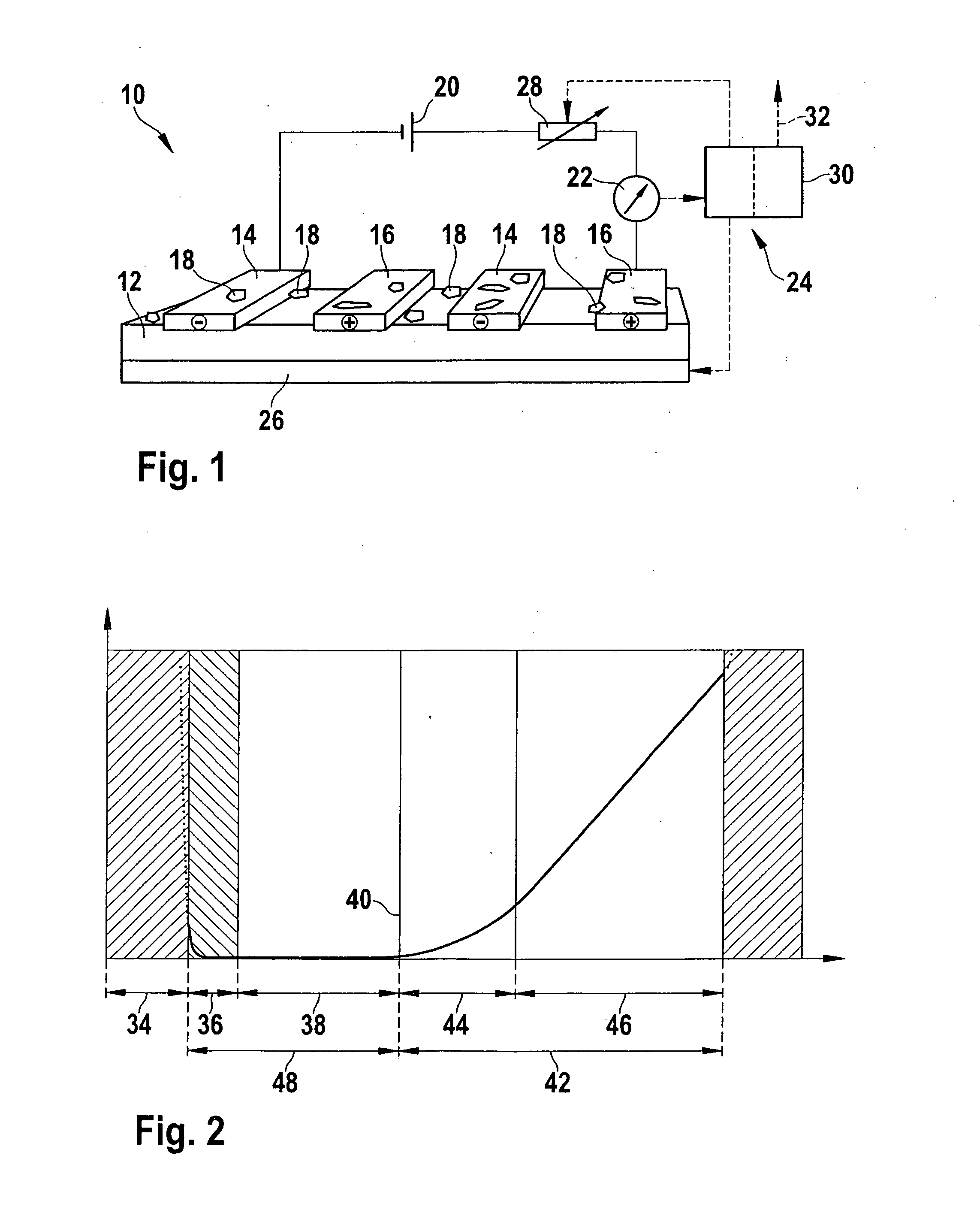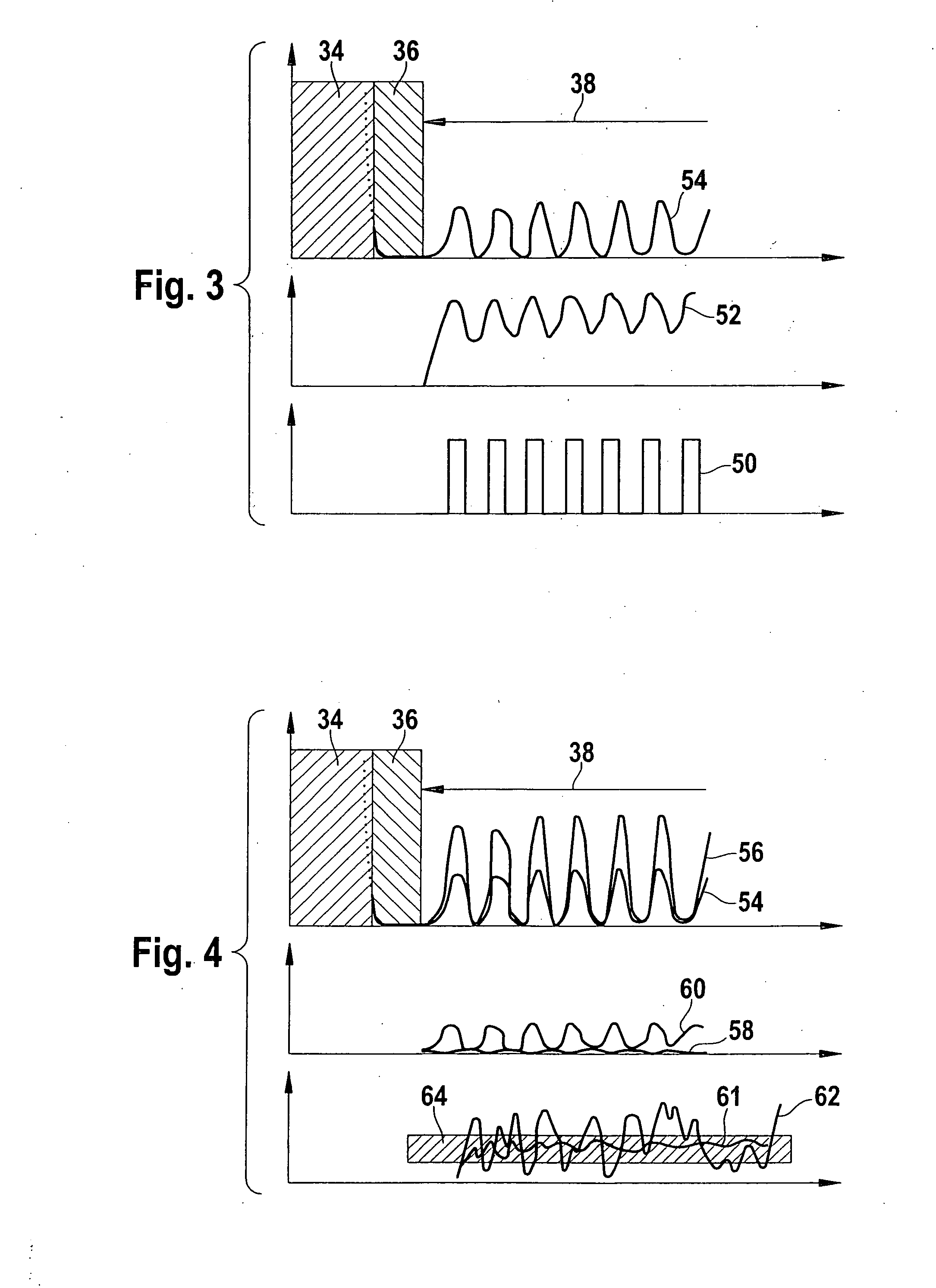Method for detecting a level of contamination of a particle sensor, and particle sensor
a technology of particle sensor and detection method, which is applied in the direction of chemical methods analysis, instruments, material analysis, etc., can solve the problems of ash particles, also accumulate on the particle sensor, and achieve the effect of improving the resolution capability
- Summary
- Abstract
- Description
- Claims
- Application Information
AI Technical Summary
Benefits of technology
Problems solved by technology
Method used
Image
Examples
Embodiment Construction
[0023]Particle sensor 10 illustrated in FIG. 1 has an insulator material 12 on which a first electrode 14 and a second electrode 16 are situated in alternation. During operation of particle sensor 10 ash particles 18 accumulate on insulator material 12 and electrodes 14, 16, which may result in an electrical shunt between first electrode 14 and second electrode 16. A power source 20 is situated between first electrode 14 and second electrode 16 for generating an electrical field between electrodes 14, 16. The resistance between electrodes 14, 16 and / or the current flowing between electrodes 14, 16 may be detected using a measuring device 22.
[0024]The variation over time of the measuring signal measured by measuring device 22 is processed in a control unit 24. Control unit 24 may also control a heating apparatus 26 in order to heat insulator material 12 above a limiting temperature at which insulator material 12 begins to become conductive, and to modulate between a lower temperature...
PUM
 Login to View More
Login to View More Abstract
Description
Claims
Application Information
 Login to View More
Login to View More - R&D
- Intellectual Property
- Life Sciences
- Materials
- Tech Scout
- Unparalleled Data Quality
- Higher Quality Content
- 60% Fewer Hallucinations
Browse by: Latest US Patents, China's latest patents, Technical Efficacy Thesaurus, Application Domain, Technology Topic, Popular Technical Reports.
© 2025 PatSnap. All rights reserved.Legal|Privacy policy|Modern Slavery Act Transparency Statement|Sitemap|About US| Contact US: help@patsnap.com



